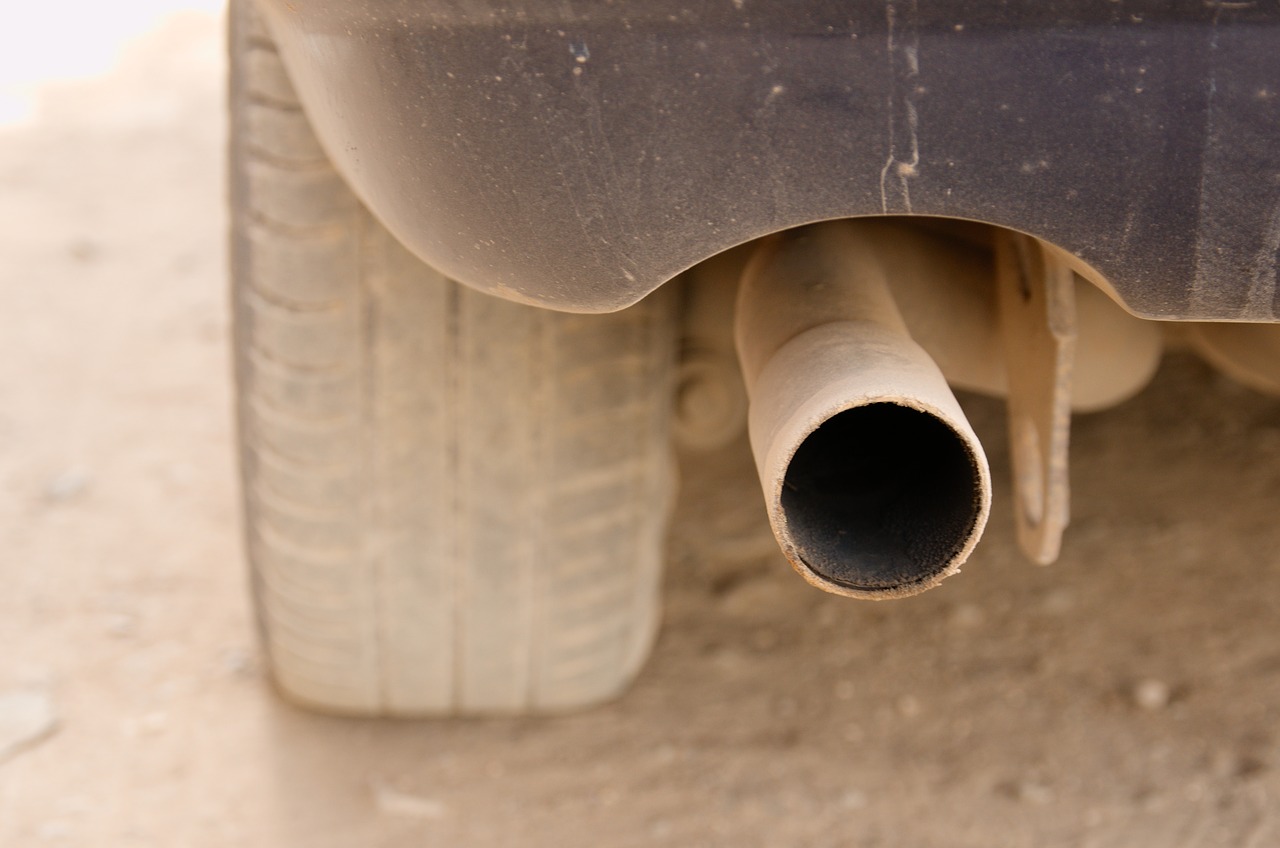Car air pollution is an often troubling reality of our lives. With environmental sustainability becoming a larger topic of interest, many Canadians are looking for impactful ways to contribute to a greener earth. A study conducted in 2005 showed than an estimated 26% of greenhouse gas emissions in Canada were due to transportation - an increase of 33% since 1990 (source). Thankfully, there are ways to help reduce emissions! Click here to learn more from our professionals about vehicle maintenance and ways you can reduce emissions!
Does your car need a Drive Clean test?
Car Air Pollution: What Are Emissions?
Emissions are the gasses and byproducts produced by vehicles such as cars and trucks during vehicle operation, refuelling, and even during the manufacturing and eventual disposal process. Some of these emissions are harmless, such as water vapour.
However, cars significantly contribute to environmental pollution due to the many other harmful gasses that are emitted during regular vehicle usage. In 2013, it was found that transportation contributed to more than half of the carbon monoxide and nitrogen oxide released into the air (source). Older cars tend to be less 'green' than newer cars.
According to ucsusa.org, pollutants from your car are categorized into two categories: primary and secondary. Primary pollution is when pollutants are released directly into the atmosphere, while secondary pollution occurs when pollutants are released and then create a chemical reaction with other pollutants in the atmosphere.
Source - ucsusa.org
Common Pollutants Released From Cars & Vehicles
Now that you know the difference between primary and secondary pollution, let's take a look at some of the specific pollutants released by cars and other motor vehicles.
- Carbon Monoxide - Carbon monoxide (CO) is a tasteless, colourless, odourless poisonous gas that can be deadly when inhaled at high concentrations. CO is produced by the incomplete burning of natural gas or other materials that burn carbon - such as gasoline.
- Nitrogen Oxides - Nitrogen oxides (NOx) are pollutants that contribute to "ground level ozone" - one of the important ingredients in smog. They can cause respiratory problems such as lung irritation and weaken the body's defence against pneumonia and the flu.
- Greenhouse Gasses - One of the most well-known vehicle emissions, greenhouse gasses (such as carbon dioxide) are pollutants that heavily contribute to global climate change.
To learn more about the different pollutants released by motor vehicles, click here.
Sources - ucsusa.org / ohsa.gov / epa.gov
How To Reduce Car Air Pollution: Reducing Emissions
Though there are some 'big' ways to reduce vehicle air pollution, such as buying a hybrid of fully electric vehicle, carpooling daily to work, or choosing to use public transportation, these options are often not viable for many individuals for a variety of reasons.
But not to worry! There are still many ways you can help reduce greenhouse gasses and other pollutants even while regularly commuting in your traditional gas-powered car. See below for some tips for reducing emissions.
1. Drive Steadily As Much As Possible
When driving at a steady speed, you can actually reduce the emissions your cars produce. This is because rapidly accelerating increases full consumption and therefore also increases your emissions. In other words, taking your time to speed up after that light turns red is actually better for the environment!
2. Avoid Idling
Idling is often unnecessary and creates significant amounts of emissions - all while you simply sit in your car. Idling not only creates pollution, but it also wastes fuel and excessive idling can cause issues with your engine.
Though you may be tempted to warm up your vehicle during our the cold Canadian winters, it's best for the environment to wait until you're ready to drive (and with most modern vehicles, "warming up" your car is no longer necessary!).
3. Use Other Means Of Transportation If Possible
Though it may not be possible to carpool or bus to work every single day of the week, consider getting a ride with a friend on a weekly basis instead. Choose to bike or walk to the convenience store when you have extra time to spare. If your job allows it, work from home when possible. These small changes may not seem like much, they will add up over time!
4. Consider Your Home Deliveries
If you purchase a lot of items online and receive regular home deliveries, consider "optimizing" your home deliveries so they arrive all at once instead of multiple times throughout the week! Larger vehicles such as transportation trucks can emit significant amounts of emissions, so optimizing your delivery schedule is a simple way to reduce emissions.
5. Regularly Maintain Your Vehicle
Regular maintenance for your vehicle will not only help ensure it is safe and efficient, it can also help ensure you are not producing higher than average levels of air pollution. Even something as simple as keeping your tires properly inflated will help reduce emissions! This is because properly inflated tires will provide a smoother drive and reduce the need for frequent acceleration.
Other common issues with your car such as clogged filters or problems with your engine can increase pollution emitted from your car. Working with a trusted automotive professional can help keep things in order. They can regularly inspect and maintain your car, ensuring small problems are fixed immediately before they become bigger ones!
In Ontario, there is a Drive Clean test program that may apply to you. The test was implemented to help reduce emissions by testing Ontario residents' vehicles to see how much air pollution each car emitted. In 2010, the program helped keep 35,000 tonnes of smog-causing pollutants out of the air! If you would like to learn more about the Drive Clean test program, click here!
Sources - epa.gov / tfxinternational.com
Trust The Professionals at Hansma Automotive!
At Hansma we offer service with a difference. We have worked hard to gain a reputation for honesty and quality work. You can trust us to only recommend and carry out the repairs that you actually need. Whether you've been in an accident and are needing a place to send your car or if you are just looking for standard maintenance, we will let you know what you need done and when it should be done.
Our customers have come to consider us as their mechanic friend. And as your mechanic friend, we promise to give you top-notch service at reasonable and competitive rates. Click here to meet our friendly team, read our testimonials, and contact us today and find out about the Hansma service difference for yourself. We are open every weekday from 8 AM to 6 PM. Come see us at 88 Shoemaker St. in Kitchener, Ontario.
“Hansma Automotive has always provided excellent service to me. They are fast, accommodating, and their work is top-notch. All the staff I've dealt with are very friendly. I would highly recommend Hansma.”
- Debra - Read More Customer Testimonials!









